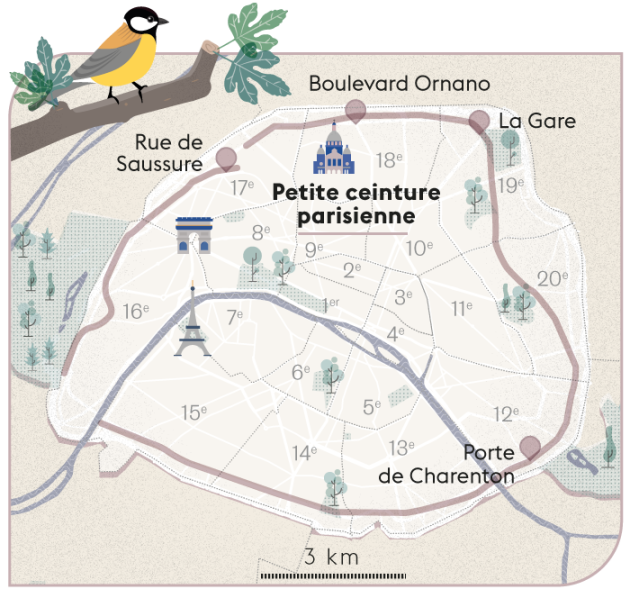Posted at the edge of the rails, walking shoes planted in the ballast, the group concentrates on the thin green line that the organizer points to on a large map of Paris. It takes between one and two days, depending on the tempo chosen, to cover this route, from station to station, following the disused railway of the small belt. But beware, trap! You can only officially travel about ten kilometers, equipped, out of the thirty-two that make up the old railway line built at the end of the 19th century.e century and abandoned during the XXewhich circles the capital along the boulevards des Maréchaux.
Failing to play cat and mouse with the constabulary, you will therefore have to be cunning, follow the rails with your eyes from the sidewalks, mentally reconstruct their route on the forbidden sections, survey the dusty bitumen until you find an entrance to dive finally in the authorized trenches and thus afford a complete tour of Paris. “It’s a nice walk but militant, it is sometimes frustrating to know that she is just below while we have to slalom between the cars »warns Antoine Sander, president of the Association of walkers of the small belt, which organizes this hike as part of the Randopolitan, a program organized by the media Enlarge your Paris of one hundred free circuits, in Ile-de-France, until the end of the Olympic Games.
Head north, to start, from the old Pont-de-Flandre station, converted into a jazz concert hall, La Gare, which is still sleeping this morning. The trees rustle and the birds chirp in this incredibly rural setting squeezed between the high apartment towers of this part of the 19e arrondissement. The euphoria does not last long, since the section open to the public only extends over 590 meters. Here is the troop tumbling onto the Rosa-Parks esplanade, one of the newest in Paris, following the rails still embedded in the concrete with their toes. Objective: not to lose this small belt barely trodden. “Here, we are literally on it! »laughs Antoine Sander in front of the dubious faces, in the middle of the passers-by who wander between the new RER station and the old Macdonald warehouse rehabilitated into housing.
The association is campaigning to open all the sections to the open air, in trenches or viaducts, to the public, and to link them together by planted promenades overlooking the tunnel sections, which are difficult to develop for safety reasons. Finally, it would be a question of marking out the route to allow city dwellers to stroll or ride, if they feel like it, on the entirety of this green ring. “That would be 60 hectares of vegetation, from the most popular neighborhoods to the most bourgeois! »says Stanislas Beckers, co-founder of the association, wearing a T-shirt with a slogan that sums up their point of view: “The largest park in Paris is hidden before your eyes. »
You have 61.52% of this article left to read. The following is for subscribers only.
